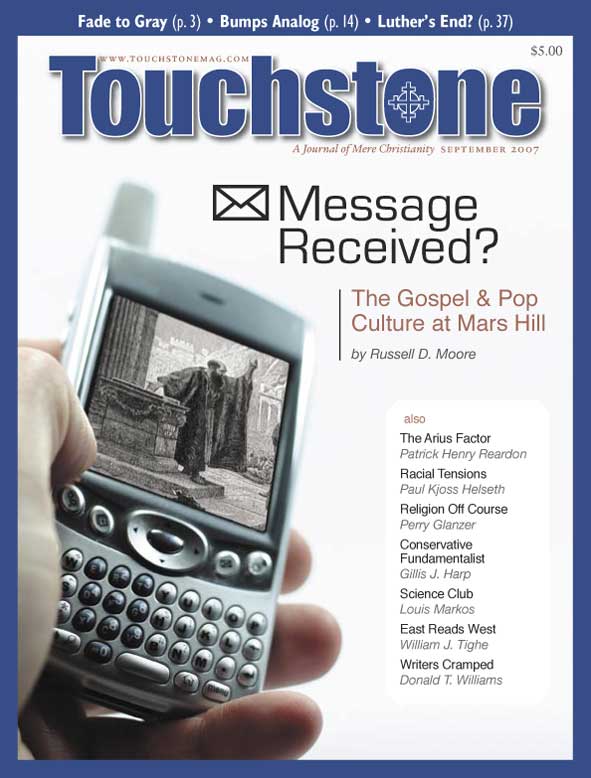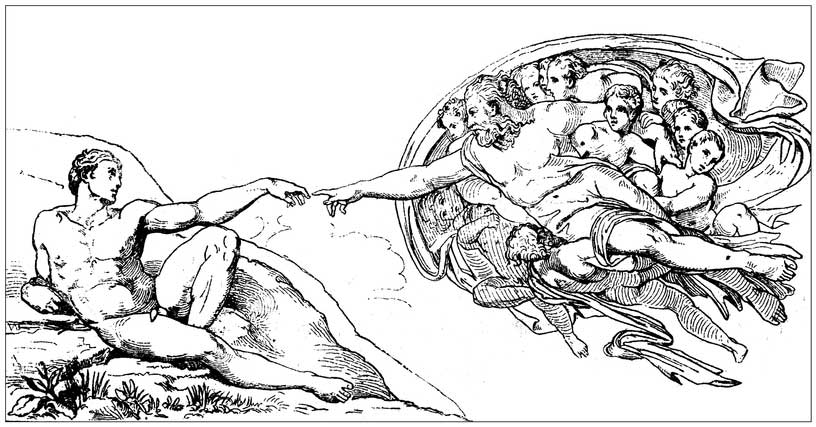Calvary Temple
Inasmuch as Christian doctrine, from the very beginning, has regarded the death of Jesus on the Cross as the definitive atoning sacrifice offered to the glory of God, this interpretation became the key to the theological understanding of the various sacrifices earlier prescribed in the Old Testament. Consequently, when the Apostle Paul wrote that Christ gave “himself for us, an offering and a sacrifice to God” (Eph. 5:2), he enunciated the theological principle by which to understand the many prior sacrifices ordained or described in Holy Writ.
That is to say, the Church interprets the sacrifices of the Old Covenant as prophetic of the perfect oblation offered by the true High Priest on the altar of the Cross. And because all prophecies are correctly understood in their fulfillment, Christian theology finds the significance of those Old Testament sacrifices in the event of Calvary. This truth is already presumed as a doctrinal principle in the New Testament.
Indeed, the New Testament provides individual examples of this understanding. Thus, St. Paul found the true meaning of the ancient Passover lamb in the self-offering whereby “Christ our Passover was sacrificed for us” (1 Cor. 5:7). The Old Testament’s daily “sin offering,” according to the Epistle to the Hebrews, pointed to the oblation in which Christ “offered up himself” (7:27). The same was true likewise of the special offering on the ancient Feast of Atonement (9:24–28). In addition, the reconciliation effected in the “peace offering” was brought to historical and cosmic perfection “through the Cross” (Eph. 2:14–18). And so on with all the Old Testament sacrifices.
Those same sacrifices, moreover, were not only prophetic of the grace of the New Covenant; they were also the faith/physical means by which the people of the Old Covenant participated in that grace. That is to say, those ancient sacrifices were likewise sacraments, ritual actions ordained by God as the means of communion with him in faith: fidei sacramenta. St. Augustine voiced the Christian persuasion on this point when he observed, “This mystery of eternal life, even from the beginning of the human race, was, by certain signs and sacraments suitable to the times, declared through angels to those for whom it was appropriate.”
This “mystery of eternal life,” Augustine went on to say, was conveyed in
the rites, priesthood, tabernacle or temple, altars, sacrifices, ceremonies, and whatever else belongs to that service of God and which in Greek is properly known as latreia—all these signified and foretold those realities (res) which we who believe in Jesus Christ unto eternal life believe have been fulfilled, or behold in the process of being fulfilled, or confidently believe shall yet be fulfilled (The City of God 7.32).
According to Augustine, then, we Christians stand in an ongoing and unbroken continuity of prophecy and fulfillment, not only with respect to the Old Testament history as a whole, but also with specific reference to Israel’s worship as prescribed in the extensive ritual of the tabernacle and the temple. We find in those prescribed rites, which mediated “the mystery of eternal life” to the Hebrew people, the outline and adumbration of our own communion with God in worship.
Within salvation history, then, there is not only a continuity of faith (such as elaborated in Hebrews 11), but also a sacramental extension through time and divinely given institutions. As the sacraments of the New Testament profess faith in what God has done and is doing in Christ (cf. 1 Cor. 11:26), so the sacraments of the Old Testament expressed faith in what God was planning and promising to do in Christ. Thus Augustine wrote, “the first sacraments, which were celebrated and observed by reason of the Law (ex lege), foretold the Christ who was to come” (Against Faustus 19.13).
This was the reason St. Thomas Aquinas spoke of the Passion of our Lord as the “final cause of the old sacraments” (causa finalis veterum sacramentorum). Those ancient sacrifices prescribed to Moses symbolically pointed to, and found their intended purpose in, the mystery of the Cross (Summa Theologica III Q. 61, art. 3, ad primam).
This is also the reason why Christians still study Leviticus and the other Scriptures in which the details of that ancient ritual are found. For us, those sundry liturgical instructions, because they express and embody a forward-looking faith in the mystery of the Cross, bear a properly theological weight.
THIS ARTICLE ONLY AVAILABLE TO SUBSCRIBERS.
FOR QUICK ACCESS:
Patrick Henry Reardon is pastor emeritus of All Saints Antiochian Orthodox Church in Chicago, Illinois, and the author of numerous books, including, most recently, Out of Step with God: Orthodox Christian Reflections on the Book of Numbers (Ancient Faith Publishing, 2019).
subscription options
Order
Print/Online Subscription

Get six issues (one year) of Touchstone PLUS full online access including pdf downloads for only $39.95. That's only $3.34 per month!
Order
Online Only
Subscription

Get a one-year full-access subscription to the Touchstone online archives for only $19.95. That's only $1.66 per month!
bulk subscriptions
Order Touchstone subscriptions in bulk and save $10 per sub! Each subscription includes 6 issues of Touchstone plus full online access to touchstonemag.com—including archives, videos, and pdf downloads of recent issues for only $29.95 each! Great for churches or study groups.
Transactions will be processed on a secure server.
more from the online archives
calling all readers
Please Donate
"There are magazines worth reading but few worth saving . . . Touchstone is just such a magazine."
—Alice von Hildebrand
"Here we do not concede one square millimeter of territory to falsehood, folly, contemporary sentimentality, or fashion. We speak the truth, and let God be our judge. . . . Touchstone is the one committedly Christian conservative journal."
—Anthony Esolen, Touchstone senior editor









